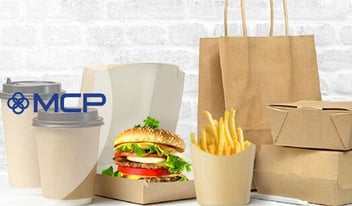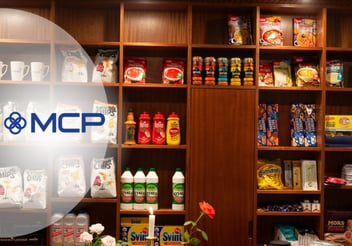
When most people think of plastic and its environmental costs, they don’t think of their drive-through coffee cup or their child’s milk or juice carton. In reality, paper-based packaging is the most commonly used packaging material in the world,..
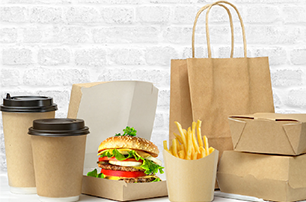 When most people think of plastic and its environmental costs, they don’t think of their drive-through coffee cup or their child’s milk or juice carton. In reality, paper-based packaging is the most commonly used packaging material in the world, including for food, and much of that paper is coated with various materials that affect its recyclability. For this reason, interest in sustainable food packaging solutions has been growing significantly in recent years.
When most people think of plastic and its environmental costs, they don’t think of their drive-through coffee cup or their child’s milk or juice carton. In reality, paper-based packaging is the most commonly used packaging material in the world, including for food, and much of that paper is coated with various materials that affect its recyclability. For this reason, interest in sustainable food packaging solutions has been growing significantly in recent years.
Sustainability in food packaging can be measured according to a variety of impacts, including how producing the packaging impacts the environment, the lifecycle of the packaging and its impact after it is produced, used, and discarded, and the impact of the product on human health.
Food manufacturers need to balance these considerations against how well a package performs to protect the food sealed inside, packaging costs, availability and scalability, among other factors. Increasing interest in and demand for sustainable food containers from consumers, retailers, and regulators is gradually shifting this balance toward packaging that can be recycled or is biodegradable and therefore compostable.
This blog will examine how barrier coatings, the thin sometimes glossy layers applied to paper and paperboard food packaging to make it stronger, more attractive, and resistant to the transmission of moisture, liquid, oil and grease, provide one avenue for food manufacturing to move toward sustainability.
Conventional Barrier Coatings
Most single-use paper coffee cups and other paper food containers and packages — from fast-food sandwich boxes to milk cartons — are lined with a polyethylene plastic coating. This petrochemical-based plastic liner makes the cup almost impossible to recycle. If such products make it into the paper recycling stream, they can clog the screening equipment, much like the buildup of debris will clog a drain. In the general waste stream, such lined cups and other food packages take up to 20 years to decompose in landfills. Ultimately, this plastic coating adds to the growing global burden of plastic and microplastic contamination.
The risk to human health is another sustainability concern associated with conventional barrier coatings. Coatings made from synthetic polymeric chemicals known as per- and polyfluoroalkyl substances (PFAS) provide excellent resistance against moisture, grease and oils but have been shown to migrate from packaging into food and have harmful effects on human health. These “forever chemicals” accumulate in the human body and the environment and have been associated with effects ranging from developmental problems to cancer.
In response to these health concerns, the U.S. Food and Drug Administration (FDA) called for the gradual phasing out of a subtype of PFAS containing eight or more carbon atoms. So-called long-chain PFAS have not been allowed in food packaging in the U.S. since November 2016. While FDA analysis of alternative short-chain PFAS continues, they are currently authorized for use as barrier coatings.
In response to the demand for sustainable food packing solutions, new specially engineered coatings, like those produced by Mallard Creek Polymers (MCP), provide the excellent barrier properties consumers and manufacturers need yet easily separate from the paper or cardboard products so they are washed away along with other residue and don’t clog paper recycling machinery.
Sustainable Packaging Design Options
Alternatives to PFAS coatings for paper food packaging are increasingly available. The higher cost of such options, however, is one of the biggest challenges to food manufacturers aiming to make a more sustainable choice for their products. Other considerations important to paper manufacturers include performance and ease of manufacturing and printing capabilities.
Performance. A range of metrics is used to evaluate how well a barrier coating blocks the transmission of moisture vapor and resists the transmission of water, moisture, oil and grease. These factors contribute directly to food safety, shelf life, product appearance and customer satisfaction.
Ease and speed of manufacturing. Structural differences between PFAS-treated paper and some sustainable alternatives can make these alternative options more difficult to work with for printing and processing.
As food packaging manufacturers develop their barrier coating solutions, they must balance these factors to satisfy end-use requirements while remaining competitive. Biopolymers, cellulose-based products, and synthetic emulsion polymers are among the PFAS alternatives currently available.
Biopolymers
Biopolymers are polymers created from organic and plant-based materials such as proteins, polysaccharides, lipids, starch, and cellulose with other agents added to improve performance. Such products require more resources to produce and significantly increase the cost of packaging. Scaling the production of biopolymers to meet the increasing demand for barrier coatings for paper and paperboard food packaging also presents a challenge to their widespread use.
Cellulose Derivatives
A cellulose-based product known as natural greaseproof paper, used for muffins or other baked goods, is created by intensely refining wood pulp so that the cellulose fibers become compressed, denser, and less porous. Other cellulose-based PFAS alternatives, including microfibrillar cellulose (MFC), cellulose nanofibrils (CNFs) and cellulose nanocrystals (CNCs), are in development. They are created through mechanical refining processes, such as pressure homogenization and grinding, for example. CNFs are being evaluated for their oxygen and gas barrier properties and CNCs for moisture resistance. Combining the two may improve oil and grease resistance. The increased processing necessary to make these materials adds to their cost and results in a slower manufacturing process.
Synthetic Emulsion Polymers
Barrier coatings can also be made from synthetic emulsion polymers, like those produced by MCP. The monomers and other ingredients used, as well as the polymerization process used to link them together, affect the properties of the barrier coating produced. For example, MCP’s styrene-butadiene emulsion polymers provide low moisture vapor transmission rates and excellent water resistance, and Tykote® acrylic polymer emulsions offer oil and grease resistance. MCP chemists design custom polymers to have the optimal characteristics needed for a particular application. These options provide an attractive, cost-effective alternative to conventional coatings without sacrificing performance.
Sustainable Solutions from Mallard Creek Polymers
MCP’s barrier coatings for food packaging are made with synthetic emulsion polymers and can be customized to meet the specific needs of a particular product or application. For example, MCP’s Tykote® 6161 is a water-based acrylic coating designed for oil and grease resistance that is also a sustainable choice. Unlike plastic- and PFAS-coated paper food packaging, products coated with Tykote® can be repulped as part of a regular paper recycling stream, as the barrier coating easily separates from the coated paper. Tykote products offer the protections that food manufacturers and customers expect — water resistance, moisture vapor resistance, and oil and grease resistance — and may comply with FDA 21CFR 176.170 without restrictions.
Contact us to learn more about our sustainable polymers for barrier coatings and food packaging and how MCP can design and produce customized food packaging solutions for your business.
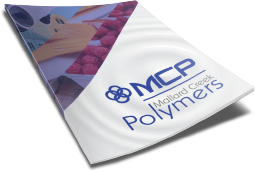
 Construction
Construction
 Nonwovens
Nonwovens
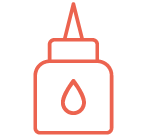 Adhesives
Adhesives
 Textiles
Textiles
 Printing & Packaging
Printing & Packaging
 Paper
Paper
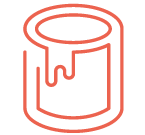 Paints & Coatings
Paints & Coatings



